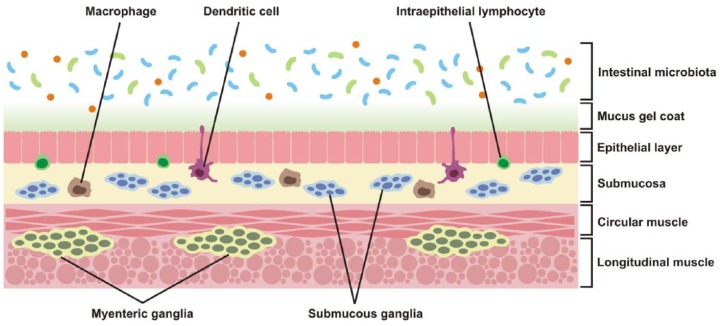Figure 1.
Cellular components in the intestine that can be targeted to modulate gut–brain axis activity. Gut microbiota is a source of antigens and other bioactive mediators. Commensal bacteria and intestinal mucus restrict mucosal colonization by pathogenic entities [Johansson et al. 2013; Hansen et al. 2014]. Junctional complexes between intestinal epithelial cells also limit translocation of luminal contents [Berkes et al. 2003]. Enteroendocrine cells, with a major role in the production of neurotransmitters and hormones, are also located in the epithelial layer [Bertrand and Bertrand, 2010; Dockray, 2014]. Immune cells, some of which are in close association with the intestinal mucosa, are in a privileged location to sense and respond to changes in microbiota composition [Daneman and Rescigno, 2009]. Enteric neurons and glia are organized in ganglia and also release soluble mediators that affect epithelial and immune functions in the gut [Gulbransen and Sharkey, 2012].

